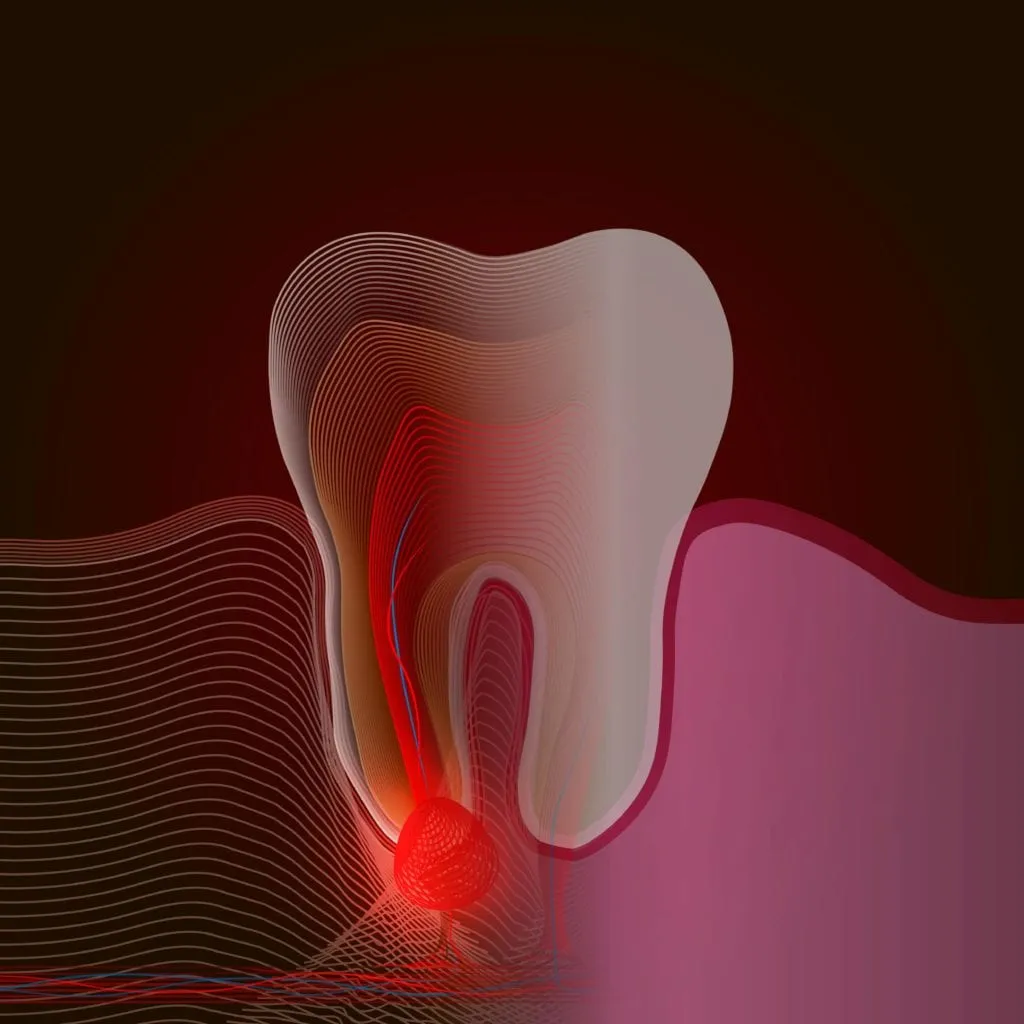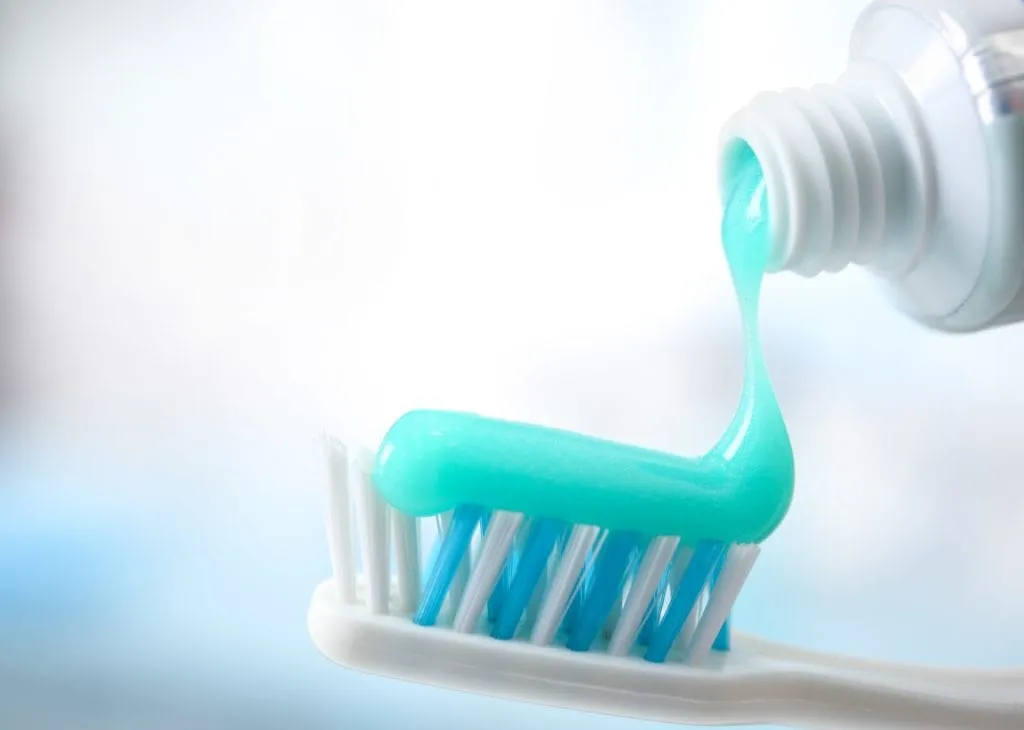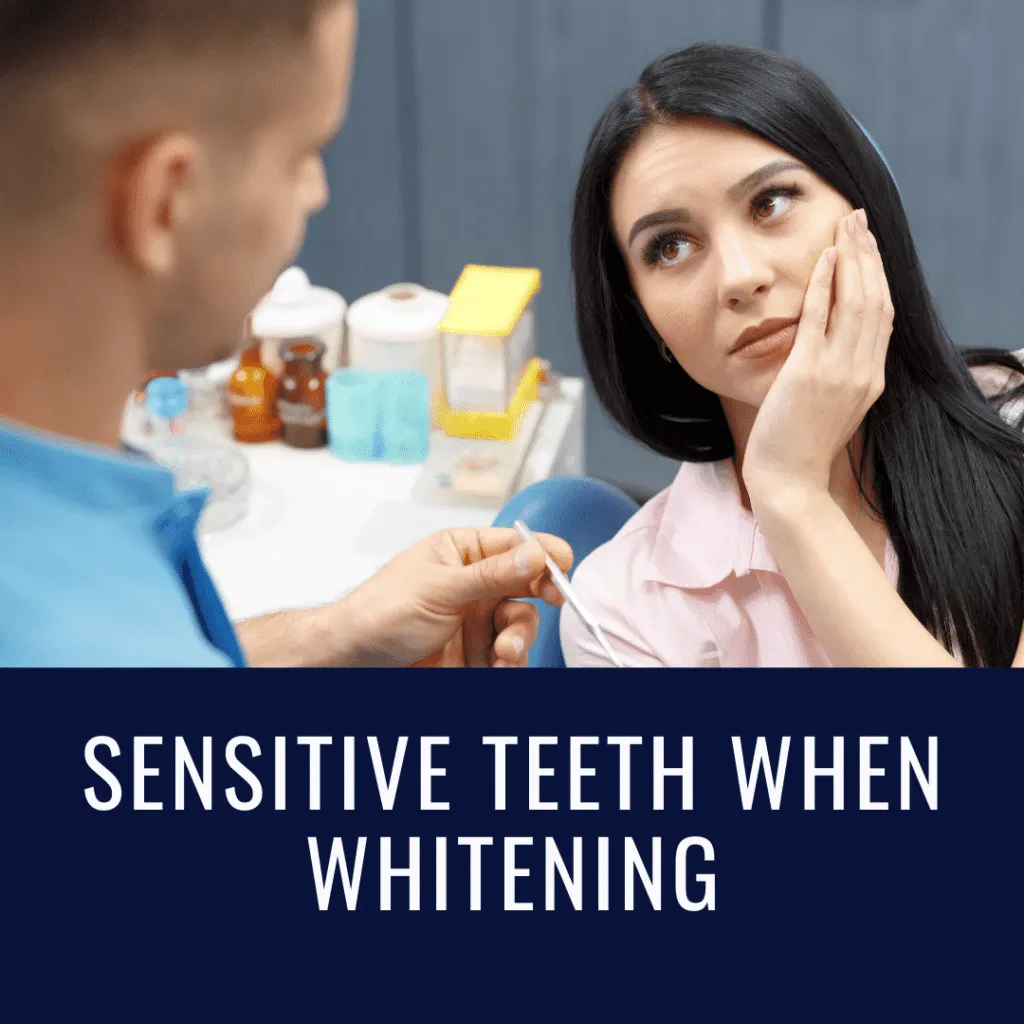One of the easiest ways to have a great smile is to have your teeth professionally whitened by a cosmetic dentist. When compared to other cosmetic dental treatments, teeth whitening is more affordable, requires less time, and does not have a recovery period. However, that doesn’t mean that it is a perfect treatment. The one main downside of teeth whitening is that it can cause tooth sensitivity.
Tooth sensitivity can be described as a deep ache within your tooth that occurs when the tooth is exposed to something sweet, hot, or cold. To understand the phenomenon of sensitive teeth when whitening, we’ll first take a look at tooth anatomy and the whitening process. Then, we’ll discuss how to combat sensitive teeth when whitening.
Why do I have sensitive teeth when whitening?

This can be answered by understanding the anatomy of the tooth, as well as the basic whitening process. For starters, your tooth is composed of three layers: enamel, dentin, and pulp. The enamel is the hard outer layer, the dentin is the middle porous layer, and the pulp is the innermost layer that contains your tooth’s nerve. Tooth sensitivity occurs when stimuli is able to contact the nerve. This can happen for a variety of reasons such as receding gums, cracked or chipped teeth, tooth decay, or worn enamel.
With that being said, let’s take a look at the whitening process. A whitening agent will be applied to the surface of your teeth and left to site for an allotted amount of time. This whitening agent contains peroxide and is absorbed by your teeth to whiten both the enamel and dentin layers. However, the whitening agent can also irritate the tooth’s nerve and produce sensitivity.
How do I combat sensitive teeth when whitening?
If you have sensitive teeth, but want to pursue whitening treatment, there are a few things you can do:
Avoid hot & cold
After having your teeth whitened, you can temporarily avoid hot or cold temperatures to prevent tooth sensitivity. If your teeth are sensitive to the peroxide in whitening agents, it should only take a few days to a week before they are back to normal. Therefore, temporarily avoiding the stimulants that cause tooth sensitivity can be an easy way to prevent it.

Use a sensitivity toothpaste
There are toothpastes that are specifically designed for those with sensitive teeth. These toothpastes are formulated to build up the enamel and reduce the pain associated with sensitivity. While they may not completely eliminate tooth sensitivity, they can help take the edge off. For the best results, it is recommended to brush with a sensitivity toothpaste about a week before and after your whitening treatment.
Talk with your dentist
If you have sensitive teeth and what to try whitening, the best thing to do is talk with your dentist. They may be able to recommend a whitener with a lower peroxide concentration or reduce the application time to prevent additional irritation.
Having sensitive teeth shouldn’t keep you from getting an amazing, white smile. However, whitening with sensitive teeth may require some additional steps to reduce your sensitivity while still accomplishing your whitening goals. Now that’s something to smile about.

Dr. Sachdeva Pushpa is a Nairobi dentist who is constantly upgrading her skills by attending hands-on courses internationally. This allows her to provide her patients with the latest dental techniques and technology. In addition to restorative dental treatments, she works to improve the surrounding soft tissues through lip augmentation, reduction of peri-oral lines, narrowing of square jaws, Fillers and Facial Thread lifting. She also uses Botox to reduce the occurrence of Bruxism and to reduce “gummy smiles”.




